Kyleena (Levonorgestrel)
Dosage & administration
By using PrescriberAI, you agree to the AI Terms of Use.
Kyleena prescribing information
Dosage and Administration
• Kyleena should not remain in the uterus after 5 years.• If pregnancy is not desired, remove Kyleena during the first 7 days of the menstrual cycle, provided the woman is still experiencing regular menses. If removal will occur at other times during the cycle or the woman does not experience regular menses, she is at risk of pregnancy; start a new contraceptive method a week prior to removal for these women.[See Dosage and Administration .]
• Gloves• Speculum
• Sterile forceps
• Remove Kyleena by applying gentle traction on the threads with forceps (Figure 9).

• If the threads are not visible, determine location of Kyleena by ultrasound[see Warnings and Precautions ].• If Kyleena is found to be in the uterine cavity on ultrasound exam, it may be removed using a narrow forceps, such as an alligator forceps. This may require dilation of the cervical canal. After removal of Kyleena, examine the system to ensure that it is intact.• If unable to remove with gentle traction, determine Kyleena location and exclude perforation by ultrasound or other imaging[see Warnings and Precautions ].• Removal may be associated with some:o pain and/or bleeding or vasovagal reactions (for example, syncope, bradycardia) or seizure, especially in patients with a predisposition to these conditions.o breakage or embedment of Kyleena in the myometrium that can make removal difficult[see Warnings and Precautions ].Analgesia, paracervical anesthesia, cervical dilation, alligator forceps or other grasping instrument, or hysteroscopy may be used to assist in removal.

Kyleena is indicated to prevent pregnancy for up to 5 years. Replace the system after 5 years if continued use is desired.
• Release rate of levonorgestrel (LNG) is 17.5 mcg/day after 24 days and declines to 7.4 mcg/day after 5 years; Kyleena must be removed or replaced after 5 years. ()2.1 Dosing Over TimeKyleena contains 19.5 mg of levonorgestrel (LNG) released
in vivoat a rate of approximately 17.5 mcg/day after 24 days. This rate decreases progressively to 9.8 mcg/day after 1 year and to 7.4 mcg/day after 5 years. The averagein vivorelease rate of LNG is approximately 12.6 mcg/day over the first year and 9.0 mcg/day over a period of 5 years. [See Clinical Pharmacology .]Kyleena must be removed by the end of the fifth year and can be replaced at the time of removal with a new Kyleena if continued contraceptive protection is desired.
Kyleena can be physically distinguished from other intrauterine systems (IUSs) by the combination of the visibility of the silver ring on ultrasound and the blue color of the removal threads.
Kyleena is supplied in a sterile package within an inserter that enables single-handed loading (see Figure 1). Do not open the package until required for insertion
[see Description ]. Do not use if the seal of the sterile package is broken or appears compromised. Use strict aseptic techniques throughout the insertion procedure[see Warnings and Precautions ].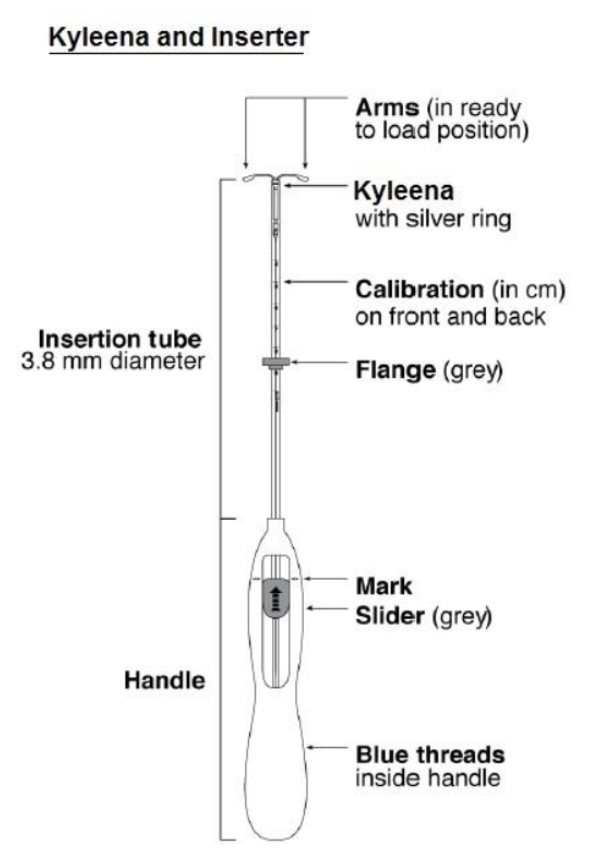

Kyleena and Inserter • To be inserted by a trained healthcare provider using strict aseptic technique. Follow insertion instructions exactly as described. ()2.2. Insertion Instructions• Obtain a complete medical and social history to determine conditions that might influence the selection of a levonorgestrel-releasing intrauterine system (LNG IUS) for contraception.If indicated, perform a physical examination and appropriate tests for any forms of genital or other sexually transmitted infections.[See Contraindications and Warnings and Precautions .]Because irregular bleeding/spotting is common during the first months of Kyleena use, exclude endometrial pathology (polyps or cancer) prior to the insertion of Kyleena in women with persistent or uncharacteristic bleeding[seeWarnings and Precautions ].• Follow the insertion instructions exactly as described to ensure proper placement and avoid premature release of Kyleena from the inserter.Once released, Kyleena cannot be re-loaded.• Check expiration date of Kyleena prior to initiating insertion.• Kyleena should be inserted by a trained healthcare provider. Healthcare providers should become thoroughly familiar with the insertion instructions before attempting insertion of Kyleena.• Insertion may be associated with some pain and/or bleeding or vasovagal reactions (for example, syncope, bradycardia), or with seizure, especially in patients with a predisposition to these conditions. Consider administering analgesics prior to insertion.
Timing of InsertionTable 1: When to Insert Kyleena Starting Kyleena in women not currently using hormonal or intrauterine contraception
• Insert Kyleena any time there is reasonable certainty that the woman is not pregnant. Consider the possibility of ovulation and conception prior to initiation of this product[see Contraindications ].• If Kyleena is inserted during the first seven days of the menstrual cycle or immediately after a first trimester abortion, back-up contraception is not needed.• If Kyleena is not inserted during the first seven days of the menstrual cycle, a barrier method of contraception should be used, or the patient should abstain from vaginal intercourse for seven days to prevent pregnancy.
Switching to Kyleena from an oral, transdermal or vaginal hormonal contraceptive
• Insert Kyleena at any time, including during the hormone-free interval of the previous method.• If inserted during active use of the previous method, continue that method for 7 days after Kyleena insertion or until the end of the current treatment cycle.• If the woman was using continuous hormonal contraception, discontinue that method seven days after Kyleena insertion.
Switching to Kyleena from an injectable progestin contraceptive
• Insert Kyleena at any time; a non-hormonal back-up birth control (such as condoms or spermicide) should also be used for 7 days if Kyleena is inserted more than 3 months (13 weeks) after the last injection.
Switching to Kyleena from a contraceptive implant or another IUS
• Insert Kyleena on the same day the implant or IUS is removed.• Insert Kyleena at any time during the menstrual cycle.
Inserting Kyleena after first trimester abortion or miscarriage
• Insert Kyleena immediately after a first-trimester abortion or miscarriage, unless it is a septic abortion[see Contraindications ].
Inserting Kyleena after childbirth or second-trimester abortion or miscarriage
• Immediate insertion after childbirth or second-trimester abortion or miscarriage
• Insert Kyleena after removal of the placenta. Back-up contraception is not needed.[See Contraindications , Warnings and Precautions , Adverse Reactions ].
Interval insertion following complete involution of the uterus
• Wait a minimum of 6 weeks or until the uterus is fully involuted before inserting Kyleena[see Warnings and Precautions ].• Insert Kyleena any time there is reasonable certainty the woman is not pregnant.• If Kyleena is not inserted during the first 7 days of the menstrual cycle, a back-up method of contraception should be used, or the woman should abstain from vaginal intercourse for 7 days to prevent pregnancy[see Contraindications , Warnings and Precautions ].
Tools for InsertionNote: The inserter provided with Kyleena (see Figure 1) and the Insertion Procedure described in this section are not applicable for immediate insertion after childbirth or second-trimester abortion or miscarriage. For immediate insertion, remove Kyleena from the inserter by first loading (see Figure 2) and then releasing (see Figure 7) Kyleena from the inserter, and insert according to accepted practice.
Preparation• Gloves• Speculum• Sterile uterine sound• Sterile tenaculum• Antiseptic solution, applicator
Procedure• Sterile gloves• Kyleena with inserter in sealed package• Instruments and anesthesia for paracervical block, if anticipated• Consider having an unopened back-up Kyleena available• Sterile, sharp curved scissors
Preparation for insertion• Exclude pregnancy and confirm that there are no other contraindications to the use of Kyleena.• With the patient comfortably in lithotomy position, do a bimanual exam to establish the size, shape and position of the uterus.• Gently insert a speculum to visualize the cervix.• Thoroughly cleanse the cervix and vagina with a suitable antiseptic solution.• Prepare to sound the uterine cavity. Grasp the upper lip of the cervix with a tenaculum forceps and gently apply traction to stabilize and align the cervical canal with the uterine cavity. Perform a paracervical block if needed. If the uterus is retroverted, it may be more appropriate to grasp the lower lip of the cervix. The tenaculum should remain in position and gentle traction on the cervix should be maintained throughout the insertion procedure.• Gently insert a uterine sound to check the patency of the cervix, measure the depth of the uterine cavity in centimeters, confirm cavity direction, and detect the presence of any uterine anomaly. If you encounter difficulty or cervical stenosis, use dilatation, and not force, to overcome resistance. If cervical dilatation is required, consider using a paracervical block.
Insertion ProcedureProceed with insertion only after completing the above steps and ascertaining that the patient is appropriate for Kyleena.
Ensure use of aseptic technique throughout the entire procedure.Step 1–Opening of the package• Open the package (Figure 1). The contents of the package are sterile.
 Figure 1. Opening the Kyleena Package
Figure 1. Opening the Kyleena Package• Using sterile gloves, lift the handle of the sterile inserter and remove from the sterile package.

Package Step 2–Load Kyleena into the insertion tube• Push the sliderforwardas far as possible in the direction of the arrow, thereby moving the insertion tube over the Kyleena T-body to load Kyleena into the insertion tube (Figure 2). The tips of the arms will meet to form a rounded end that extends slightly beyond the insertion tube.
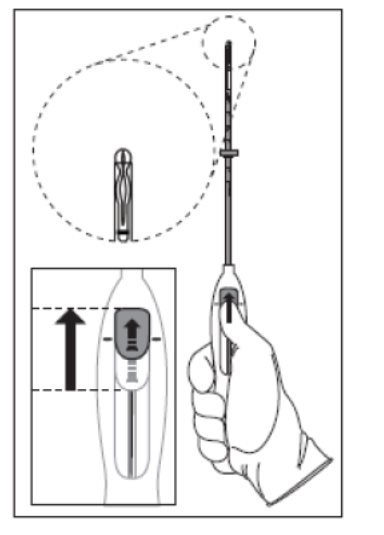 Figure 2. Move slider all the way to the forward position to load Kyleena
Figure 2. Move slider all the way to the forward position to load Kyleena• Maintain forward pressure with your thumb or forefinger on the slider.DO NOT move the slider downward at this time as this may prematurely release the threads of Kyleena. Once the slider is moved below the mark, Kyleena cannot be re-loaded.

Load Kyleena Step 3–Setting the Flange• Holding the slider in this forward position, set the upper edge of the flange to correspond to the uterine depth (in centimeters) measured during sounding (Figure 3).
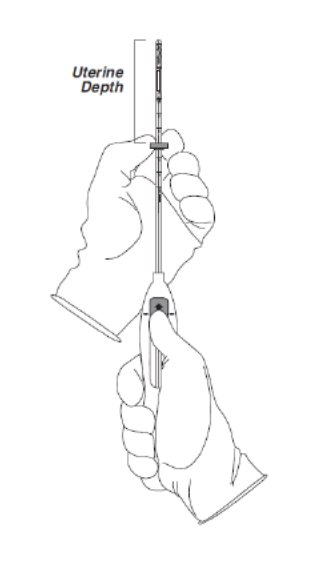 Figure 3. Setting the flange
Figure 3. Setting the flange
Setting Flange Step 4–Kyleena is now ready to be inserted• Continue holding the slider in this forward position. Advance the inserter through the cervix until the flange is approximately 1.5–2 cm from the cervix and then pause (Figure 4).
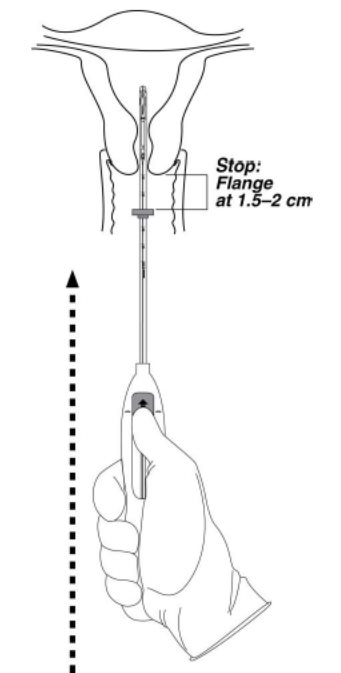 Figure 4. Advancing insertion tube until flange is 1.5 to 2 cm from the cervixDo not force the inserter. If necessary, dilate the cervical canal.
Figure 4. Advancing insertion tube until flange is 1.5 to 2 cm from the cervixDo not force the inserter. If necessary, dilate the cervical canal.
Advancing Flange Step 5–Open the arms• While holding the inserter steady,move the slider down to the markto release the arms of Kyleena (Figure 5). Wait 10 seconds for the horizontal arms to open completely.
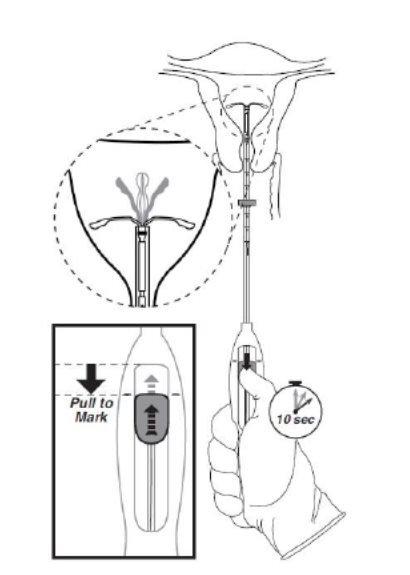 Figure 5. Move the slider back to the mark to release and open the arms
Figure 5. Move the slider back to the mark to release and open the arms
Back to Mark Step 6–Advance to fundal positionAdvance the inserter gently towards the fundus of the uterus
until the flange touches the cervix. If you encounter fundal resistance do not continue to advance. Kyleena is now in the fundal position (Figure 6).Fundal positioning of Kyleena is important to prevent expulsion. Figure 6. Move Kyleena into the fundal position
Figure 6. Move Kyleena into the fundal position
Funda Position Step 7–Release Kyleena and withdraw the inserter• Holding the entire inserter firmly in place, release Kyleena by movingthe slider all the way down(Figure 7).
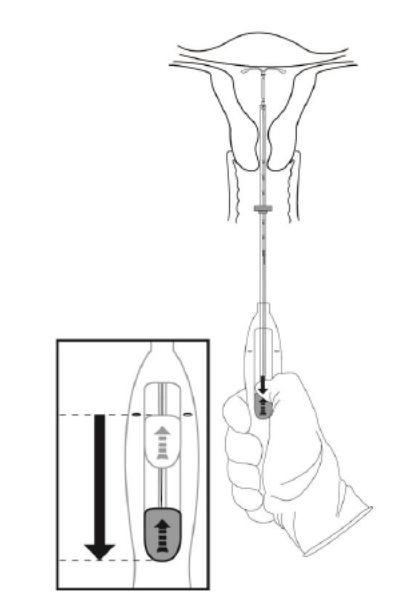 Figure 7. Move the slider all the way down to release Kyleena from the insertion tube
Figure 7. Move the slider all the way down to release Kyleena from the insertion tube• Continue to hold the slider all the way down while you slowly and gently withdraw the inserter from the uterus.• Using a sharp, curved scissor, cut the threadsperpendicular, leaving about 3 cm visible outside of the cervix [cutting threads at an angle may leave sharp ends (Figure 8)]. Do not apply tension or pull on the threads when cutting to prevent displacing Kyleena.
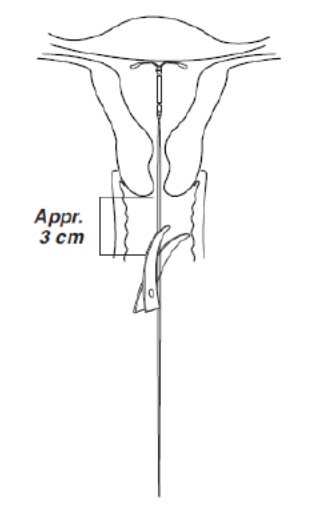 Figure 8. Cutting the threads
Figure 8. Cutting the threadsKyleena insertion is now complete. Prescribe analgesics, if indicated. Record the Kyleena lot number in the patient records.

Moving Slider 
Cutting Threads Important information to consider during or after insertion• If you suspect that Kyleena is not in the correct position, check placement (for example, using transvaginal ultrasound). Remove Kyleena if it is not positioned completely within the uterus. Do not reinsert a removed Kyleena.• If there is clinical concern, exceptional pain or bleeding during or after insertion, take appropriate steps (such as physical examination and ultrasound) immediately to exclude perforation.
• Patient should be re-examined and evaluated 4 to 6 weeks after insertion; then yearly or more often if clinically indicated. ()2.3 Patient Follow-up• Reexamine and evaluate patients 4 to 6 weeks after insertion and once a year thereafter, or more frequently if clinically indicated.
Kyleena is a LNG-releasing IUS (a type of intrauterine device, or IUD) consisting of a T-shaped polyethylene frame with a steroid reservoir containing a total of 19.5 mg LNG.
The use of Kyleena is contraindicated in pregnancy or with a suspected pregnancy and Kyleena may cause adverse pregnancy outcomes
The use of Kyleena is contraindicated when one or more of the following conditions exist:
• Pregnancy or suspicion of pregnancy[see Warnings and Precautions , Use in Specific Populations ]• For use as post-coital contraception (emergency contraception)• Congenital or acquired uterine anomaly, including fibroids, that distorts the uterine cavity• Acute pelvic inflammatory disease (PID) or a history of PID unless there has been a subsequent intrauterine pregnancy[see Warnings and Precautions ]• Postpartum endometritis or infected abortion in the past 3 months• Known or suspected uterine or cervical malignancy• Known or suspected breast cancer or other progestin-sensitive cancer, now or in the past• Uterine bleeding of unknown etiology• Untreated acute cervicitis or vaginitis, including bacterial vaginosis or other lower genital tract infections until infection is controlled• Acute liver disease or liver tumor (benign or malignant)• Conditions associated with increased susceptibility to pelvic infections[see Warnings and Precautions ]• A previously inserted intrauterine device (IUD) that has not been removed• Hypersensitivity to any component of this product[see Adverse Reactions and Description ]
• Pregnancy or suspicion of pregnancy. Cannot be used for post-coital contraception (emergency contraception)• Congenital or acquired uterine anomaly if it distorts the uterine cavity• Acute pelvic inflammatory disease (PID) or a history of PID unless there has been a subsequent intrauterine pregnancy• Postpartum endometritis or infected abortion in the past 3 months• Known or suspected uterine or cervical malignancy• Known or suspected breast cancer or other progestin-sensitive cancer• Uterine bleeding of unknown etiology• Untreated acute cervicitis or vaginitis or other lower genital tract infections• Acute liver disease or liver tumor (benign or malignant)• Increased susceptibility to pelvic infection• A previous intrauterine device (IUD) that has not been removed• Hypersensitivity to any component of Kyleena
Evaluate women for ectopic pregnancy if they become pregnant with Kyleena in place because the likelihood of a pregnancy being ectopic is increased with Kyleena. Approximately one-half of pregnancies that occur with Kyleena in place are likely to be ectopic. Also consider the possibility of ectopic pregnancy in the case of lower abdominal pain, especially in association with missed menses or if an amenorrheic woman starts bleeding.
The incidence of ectopic pregnancy in clinical trials with Kyleena, which excluded women with a history of ectopic pregnancy, was approximately 0.2% per year. The risk of ectopic pregnancy in women who have a history of ectopic pregnancy and use Kyleena is unknown. Women with a previous history of ectopic pregnancy, tubal surgery or pelvic infection carry a higher risk of ectopic pregnancy. Ectopic pregnancy may result in loss of fertility.
If pregnancy occurs while using Kyleena, remove Kyleena because leaving it in place may increase the risk of spontaneous abortion and preterm labor. Removal of Kyleena or probing of the uterus may also result in spontaneous abortion. In the event of an intrauterine pregnancy with Kyleena, consider the following:
In patients becoming pregnant with an IUS in place, septic abortion—with septicemia, septic shock, and death—may occur.
If a woman becomes pregnant with Kyleena in place and if Kyleena cannot be removed or the woman chooses not to have it removed, warn her that failure to remove Kyleena increases the risk of miscarriage, sepsis, premature labor and premature delivery. Advise her of isolated reports of virilization of the female fetus following local exposure to LNG during pregnancy with an LNG IUS in place
Evaluate women for ectopic pregnancy if they become pregnant with Kyleena in place because the likelihood of a pregnancy being ectopic is increased with Kyleena. Approximately one-half of pregnancies that occur with Kyleena in place are likely to be ectopic. Also consider the possibility of ectopic pregnancy in the case of lower abdominal pain, especially in association with missed menses or if an amenorrheic woman starts bleeding.
The incidence of ectopic pregnancy in clinical trials with Kyleena, which excluded women with a history of ectopic pregnancy, was approximately 0.2% per year. The risk of ectopic pregnancy in women who have a history of ectopic pregnancy and use Kyleena is unknown. Women with a previous history of ectopic pregnancy, tubal surgery or pelvic infection carry a higher risk of ectopic pregnancy. Ectopic pregnancy may result in loss of fertility.
If pregnancy occurs while using Kyleena, remove Kyleena because leaving it in place may increase the risk of spontaneous abortion and preterm labor. Removal of Kyleena or probing of the uterus may also result in spontaneous abortion. In the event of an intrauterine pregnancy with Kyleena, consider the following:
In patients becoming pregnant with an IUS in place, septic abortion—with septicemia, septic shock, and death—may occur.
If a woman becomes pregnant with Kyleena in place and if Kyleena cannot be removed or the woman chooses not to have it removed, warn her that failure to remove Kyleena increases the risk of miscarriage, sepsis, premature labor and premature delivery. Advise her of isolated reports of virilization of the female fetus following local exposure to LNG during pregnancy with an LNG IUS in place
There have been isolated cases of virilization of the external genitalia of the female fetus following local exposure to LNG during pregnancy with an LNG IUS in place. Animal reproduction studies have not been conducted with Kyleena.
The use of Kyleena is contraindicated when one or more of the following conditions exist:
• Pregnancy or suspicion of pregnancy[see Warnings and Precautions (), Use in Specific Populations (5.2 Risks with Intrauterine PregnancyIf pregnancy occurs while using Kyleena, remove Kyleena because leaving it in place may increase the risk of spontaneous abortion and preterm labor. Removal of Kyleena or probing of the uterus may also result in spontaneous abortion. In the event of an intrauterine pregnancy with Kyleena, consider the following:
Septic abortionIn patients becoming pregnant with an IUS in place, septic abortion—with septicemia, septic shock, and death—may occur.
Continuation of pregnancyIf a woman becomes pregnant with Kyleena in place and if Kyleena cannot be removed or the woman chooses not to have it removed, warn her that failure to remove Kyleena increases the risk of miscarriage, sepsis, premature labor and premature delivery. Advise her of isolated reports of virilization of the female fetus following local exposure to LNG during pregnancy with an LNG IUS in place
[see Use in Specific Populations ]. Follow her pregnancy closely and advise her to report immediately any symptom that suggests complications of the pregnancy.)]8.1 PregnancyRisk SummaryThe use of Kyleena is contraindicated in pregnancy or with a suspected pregnancy and Kyleena may cause adverse pregnancy outcomes
[see Contraindications , Warnings and Precautions ].If a woman becomes pregnant with Kyleena in place, the likelihood of ectopic pregnancy is increased and there is an increased risk of miscarriage, sepsis, premature labor, and premature delivery.Remove Kyleena, if possible, if pregnancy occurs in a woman using Kyleena. If Kyleena cannot be removed, follow the pregnancy closely[see Warnings and Precautions ].There have been isolated cases of virilization of the external genitalia of the female fetus following local exposure to LNG during pregnancy with an LNG IUS in place. Animal reproduction studies have not been conducted with Kyleena.
• For use as post-coital contraception (emergency contraception)• Congenital or acquired uterine anomaly, including fibroids, that distorts the uterine cavity• Acute pelvic inflammatory disease (PID) or a history of PID unless there has been a subsequent intrauterine pregnancy[see Warnings and Precautions ()]5.4 Pelvic InfectionPromptly examine users with complaints of lower abdominal or pelvic pain, odorous discharge, unexplained bleeding, fever, genital lesions or sores. Remove Kyleena in cases of recurrent endometritis or pelvic inflammatory disease, or if an acute pelvic infection is severe or does not respond to treatment.
Pelvic Inflammatory Disease (PID)Kyleena is contraindicated in the presence of known or suspected PID or in women with a history of PID unless there has been a subsequent intrauterine pregnancy
[see Contraindications ]. IUDs have been associated with an increased risk of PID, most likely due to organisms being introduced into the uterus during insertion. In clinical trials, PID was observed in 0.5% of women overall and occurred more frequently within the first year and most often within the first month after insertion of Kyleena.Women at increased risk for PIDPID is often associated with a sexually transmitted infection (STI), and Kyleena does not protect against STI. The risk of PID is greater for women who have multiple sexual partners, and also for women whose sexual partner(s) have multiple sexual partners. Women who have had PID are at increased risk for a recurrence or re-infection. In particular, ascertain whether the woman is at increased risk of infection (for example, leukemia, acquired immune deficiency syndrome [AIDS], intravenous drug abuse).
Subclinical PIDPID may be asymptomatic but still result in tubal damage and its sequelae.
Treatment of PIDFollowing a diagnosis of PID, or suspected PID, bacteriologic specimens should be obtained, and antibiotic therapy should be initiated promptly. Removal of Kyleena after initiation of antibiotic therapy is usually appropriate.1
ActinomycosisActinomycosis has been associated with IUDs. Remove Kyleena from symptomatic women and treat with antibiotics. The significance of actinomyces-like organisms on Pap smear in an asymptomatic IUD user is unknown, and so this finding alone does not always require Kyleena removal and treatment. When possible, confirm a Pap smear diagnosis with cultures.
• Postpartum endometritis or infected abortion in the past 3 months• Known or suspected uterine or cervical malignancy• Known or suspected breast cancer or other progestin-sensitive cancer, now or in the past• Uterine bleeding of unknown etiology• Untreated acute cervicitis or vaginitis, including bacterial vaginosis or other lower genital tract infections until infection is controlled• Acute liver disease or liver tumor (benign or malignant)• Conditions associated with increased susceptibility to pelvic infections[see Warnings and Precautions ()]5.4 Pelvic InfectionPromptly examine users with complaints of lower abdominal or pelvic pain, odorous discharge, unexplained bleeding, fever, genital lesions or sores. Remove Kyleena in cases of recurrent endometritis or pelvic inflammatory disease, or if an acute pelvic infection is severe or does not respond to treatment.
Pelvic Inflammatory Disease (PID)Kyleena is contraindicated in the presence of known or suspected PID or in women with a history of PID unless there has been a subsequent intrauterine pregnancy
[see Contraindications ]. IUDs have been associated with an increased risk of PID, most likely due to organisms being introduced into the uterus during insertion. In clinical trials, PID was observed in 0.5% of women overall and occurred more frequently within the first year and most often within the first month after insertion of Kyleena.Women at increased risk for PIDPID is often associated with a sexually transmitted infection (STI), and Kyleena does not protect against STI. The risk of PID is greater for women who have multiple sexual partners, and also for women whose sexual partner(s) have multiple sexual partners. Women who have had PID are at increased risk for a recurrence or re-infection. In particular, ascertain whether the woman is at increased risk of infection (for example, leukemia, acquired immune deficiency syndrome [AIDS], intravenous drug abuse).
Subclinical PIDPID may be asymptomatic but still result in tubal damage and its sequelae.
Treatment of PIDFollowing a diagnosis of PID, or suspected PID, bacteriologic specimens should be obtained, and antibiotic therapy should be initiated promptly. Removal of Kyleena after initiation of antibiotic therapy is usually appropriate.1
ActinomycosisActinomycosis has been associated with IUDs. Remove Kyleena from symptomatic women and treat with antibiotics. The significance of actinomyces-like organisms on Pap smear in an asymptomatic IUD user is unknown, and so this finding alone does not always require Kyleena removal and treatment. When possible, confirm a Pap smear diagnosis with cultures.
• A previously inserted intrauterine device (IUD) that has not been removed• Hypersensitivity to any component of this product[see Adverse Reactions () and Description (6.2 Postmarketing ExperienceAdverse Reactions from Postmarketing Spontaneous ReportsThe following adverse reactions have been identified during post-approval use of LNG-releasing IUSs. Because these reactions are reported voluntarily from a population of uncertain size, it is not always possible to reliably estimate their frequency or establish a causal relationship to drug exposure.
• Arterial thrombotic and venous thromboembolic events, including cases of pulmonary embolism, deep vein thrombosis and stroke• Device breakage• Hypersensitivity (including rash, urticaria, and angioedema)• Increased blood pressure
Reported Adverse Reactions from Postmarketing StudiesAssessment of Perforation and Expulsion of Intrauterine Devices (APEX IUD) StudyAPEX IUD was a large US retrospective cohort study to assess the impact of breastfeeding and timing of postpartum IUD insertion on uterine perforation and IUD expulsion. The analyses included a total of 326,658 insertions, 30% (97,824 insertions) of which were performed in women with a delivery in the previous 12 months. For insertions performed in women who had delivered ≤ 52 weeks before IUD insertion, the majority of postpartum insertions, 57.3% (56,047 insertions) occurred between 6 and 14 weeks postpartum. Breastfeeding data were available in 94,817 insertions performed in women 52 weeks or less after delivery.
The study results indicated that the risk of uterine perforation was highest in women with IUD insertion ≤ 6 weeks postpartum. Immediate postpartum insertion (0–3 days) findings are limited due to the relatively small number of insertions occurring within this time interval. Women who were breastfeeding at the time of insertion were at 33% higher risk of perforation (adjusted hazard ratio [HR]=1.33, 95% confidence interval [CI]: 1.07–1.64) compared to women who were not breastfeeding at the time of insertion. Progressively lower risk of uterine perforation was observed in postpartum time windows beyond 6 weeks, in both breastfeeding and not breastfeeding women. Table 5 presents the uterine perforation rates for LNG IUS stratified by breastfeeding status and postpartum interval.
Table 5: Uterine Perforation1rates for LNG IUS, by Breastfeeding Status and Postpartum Interval Breastfeeding at time of insertionNot breastfeeding at time of insertionPostpartum interval at time of insertionNumber of events/ insertions
Uterine perforation rate per 1,000 insertions
Number of events/ insertions
Uterine perforation rate
per 1,000 insertions0 to 3 days8/1,896
4.22
0/277
0.00
4 days to ≤ 6 weeks120/10,735
11.18
28/2,377
11.78
> 6 to ≤ 14 weeks268/29,677
9.03
80/12,011
6.66
> 14 to ≤ 52 weeks43/6,139
7.00
22/9,089
2.42
> 52 weeks or no deliveryno data available
243/184,733
1.32
1Uterine perforation includes both complete and partial
perforationRisk of expulsion was variable over the postpartum intervals through 52 weeks. Women who were breastfeeding were at 28% lower risk of IUD expulsion (adjusted HR=0.72, 95% CI: 0.64-0.80) compared to women who were not breastfeeding at time of insertion. Table 6 presents the IUD expulsion rates for LNG IUS stratified by breastfeeding status and postpartum interval.
Table 6: Expulsion1Rates for LNG IUS, by Breastfeeding Status and Postpartum Interval Breastfeeding at time of insertionNot breastfeeding at time of insertionPostpartum interval at time of insertionNumber of events/ insertions
Expulsion rate
per 1,000 insertionsNumber of events/ insertions
Expulsion rate
per 1,000 insertions0 to 3 days187/1,896
98.63
12/277
43.32
4 days to ≤ 6 weeks185/10,735
17.23
52/2,377
21.88
> 6 to ≤ 14 weeks421/29,677
14.19
306/12,011
25.48
> 14 to ≤ 52 weeks120/6,139
19.55
273/9,089
30.04
> 52 weeks or no deliveryno data available
5,481/184,733
29.67
1Expulsion includes both complete and partial expulsion
)]11.1 KyleenaKyleena consists of a T-shaped polyethylene frame (T-body) with a steroid reservoir (hormone elastomer core) around the vertical stem. The white T-body has a loop at one end of the vertical stem and two horizontal arms at the other end. The reservoir consists of a whitish or pale yellow cylinder, made of a mixture of LNG and silicone (polydimethylsiloxane), containing a total of 19.5 mg LNG. The reservoir is covered by a semi-opaque silicone membrane, composed of polydimethylsiloxane and colloidal silica. A ring composed of 99.95% pure silver is located at the top of the vertical stem close to the horizontal arms and is visible by ultrasound. The polyethylene of the T-body is compounded with barium sulfate, which makes it radiopaque. A monofilament blue polypropylene removal thread is attached to a loop at the end of the vertical stem of the T-body. The polypropylene of the removal thread contains <0.5% phthalocyaninato(2-) copper as a colorant (see Figure 10).
The components of Kyleena, including its packaging, are not manufactured using natural rubber latex.
 Figure 10. Kyleena
Figure 10. Kyleena
Kyleena